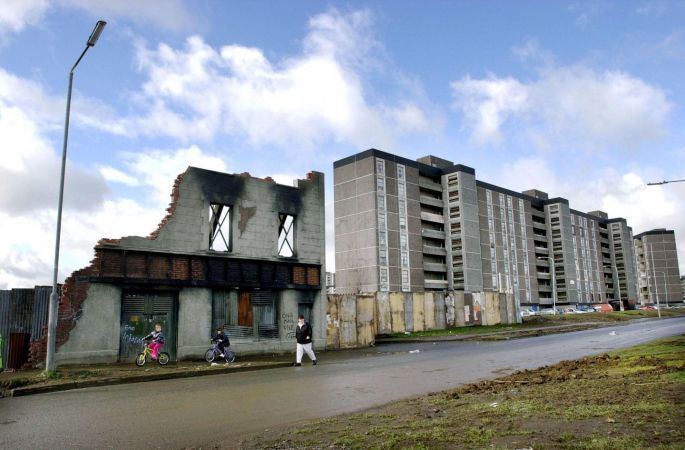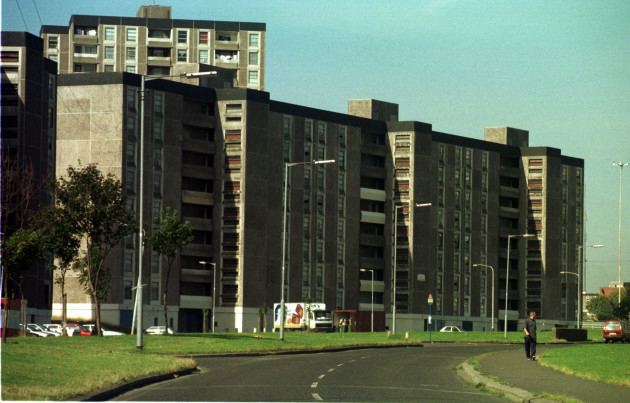 | ||
Similar Kilmainham Gaol, Little Sugar Loaf, James Joyce Centre, The National Wax Mus, Dublin Zoo | ||
Ballymun flats demolition dublin ireland new hq destruction
The Ballymun Flats refers to a number of flats—including the Ballymun tower blocks, seven landmark residential towers built in the 1960s—in Ballymun, Dublin. In total there were 36 blocks of Ballymun flats (7 fifteen-storey, 19 eight-storey and 10 four-storey blocks). They were all demolished in the early 21at century; from October 2013 all three remaining blocks were empty, and demolition of the last began in September 2015.
Contents
- Ballymun flats demolition dublin ireland new hq destruction
- Urbex the colours of the ballymun flats
- History
- Four storey flats
- Eight storey flats
- Fifteen story flats
- ConstructionDemolition
- In popular culture
- References

Urbex the colours of the ballymun flats
History

The Ballymun Flats were built in the 1960s to accommodate the rising population, particularly to accommodate former residents of inner-city areas which were being cleared in the process of 1960s 'urban slum clearances'. Whilst suffering from a lack of sufficient public amenities, several schools served the area (Holy Spirit N.S. and Ballymun Comprehensive), as well as an Eastern Health Board medical centre and a purpose built shopping centre. The area suffered from many social problems such as drugs and rampant crime. The causes of these social problems, and the subsequent discrimination faced by many people with Ballymun addresses when seeking employment outside the suburb, have been disputed, but Ballymun generally paralleled the experience of many working-class people in the 1960 and 1970s when placed in high-rise locations.

Despite the negative perceptions of many non-residents of Ballymun, many of the residents insist that there is a strong sense of pride and community in the area. Lynn Connolly, whose 2006 memoir The Mun: Growing Up in Ballymun detailed her raising there in the 1970s and 1980s, readily acknowledged the problems there and wanted to get out at the time. But she later came to realise that there had been much that was good at the towers – in terms of a collective wit among residents and a helping sense of community – which had been ignored by the media.

The Ballymun Flats were the first place in the Irish Republic to receive cable television. RTE Relays Ltd, a subsidiary of the national broadcaster RTE installed cable television into the flats in the 1963, giving each flat the ability to watch the main UK television channels BBC One, BBC Two, ITV (from 1982 Channel 4) as well as RTE Television via cable.
Four-storey flats
All three four-storey flats (Sandyhill Avenue, Sillogue Avenue and Shangan Avenue) have been demolished. A new area called Marewood, consisting of houses and apartments, is now situated where the Sandyhill Avenue flats once stood.
Eight-storey flats
All of these flats (Joseph Plunkett, Balcurris) have now since been demolished around about the end of 2015, leaving no more eight-storey flats remaining in the estate.
Fifteen-story flats
The Ballymun tower blocks were seven landmark residential towers built in the 1960s in Ballymun, Dublin, Republic of Ireland. The seven towers were named after the seven leaders of the 1916 rising; Patrick Pearse, Thomas MacDonagh, Sean MacDermott, Eamonn Ceannt, Thomas Clarke, James Connolly and Joseph Plunkett.
In 2004 demolition of the first tower began. The Patrick Pearse tower was demolished slowly by mechanical means, whilst MacDermott and MacDonagh Towers were demolished by controlled implosion. Ceannt, Plunkett, Clarke and Connolly towers were demolished by mechanical means.
The red aircraft warning lights on these structures were not connected to any form of back-up power for many years, leaving the towers completely dark in a power outage.
